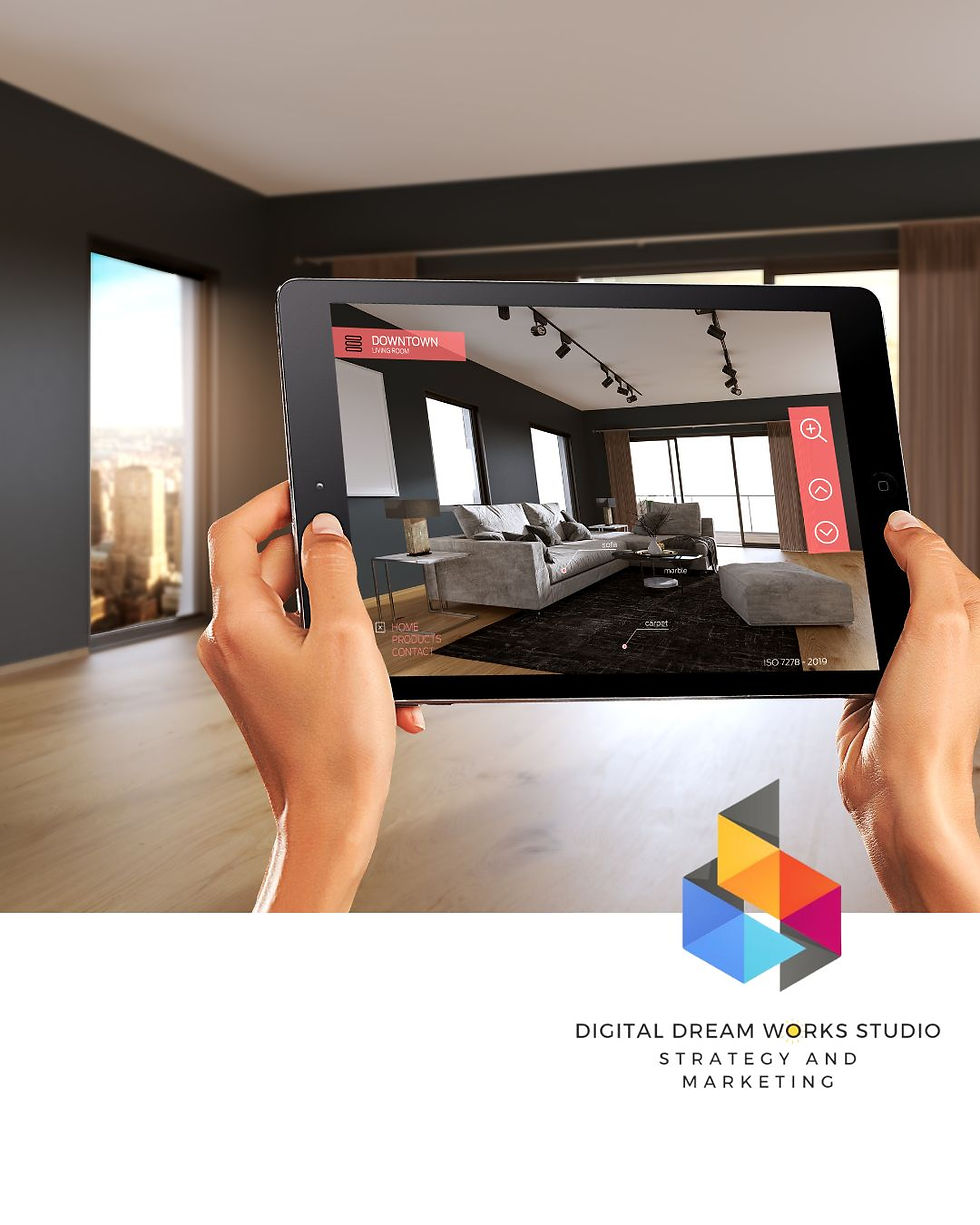Augmented Reality Marketing: The Future of Immersive Brand Engagement
- Sammy
- Feb 4
- 4 min read

Augmented Reality (AR) is reshaping the marketing landscape by offering immersive, interactive, and personalized brand experiences. As technology advances and consumer expectations evolve, AR marketing is emerging as a powerful tool to bridge the gap between digital engagement and real-world interaction. In this article Augmented Reality Marketing: The Future of Immersive Brand Engagement we explore the impact of AR on marketing, its benefits, industry applications, and strategies for leveraging AR to enhance brand visibility and customer engagement.
What is Augmented Reality Marketing?
Augmented Reality (AR) marketing involves the integration of digital elements—such as images, videos, and 3D models—into the physical environment through devices like smartphones, tablets, and AR headsets. Unlike Virtual Reality (VR), which creates a completely digital world, AR enhances real-world settings by overlaying digital content. This technology allows brands to create interactive experiences that captivate and engage consumers in real-time.
Benefits of AR in Marketing
1. Enhanced Customer Engagement
AR captivates users by providing interactive and visually appealing experiences, leading to higher engagement rates. Gamified AR experiences, such as virtual try-ons or product simulations, keep customers engaged longer than traditional ads.
2. Improved Brand Awareness and Recall
By offering unique and memorable experiences, AR marketing helps brands stand out in a crowded digital landscape. Studies show that interactive content is more likely to be remembered than static advertisements.
3. Higher Conversion Rates
Consumers are more likely to make a purchase when they can visualize products in their environment. AR-driven product previews reduce hesitation and boost confidence in buying decisions, leading to increased conversions.
4. Personalization and Customization
AR allows brands to deliver personalized experiences based on user preferences. For instance, beauty brands enable customers to try different shades of makeup virtually, while fashion retailers offer AR-powered outfit customization.
5. Reduced Return Rates
Since AR enables customers to interact with products before purchasing, it minimizes the likelihood of dissatisfaction, thus reducing return rates for e-commerce brands.

Applications of AR in Marketing
1. Retail and E-commerce
Virtual Try-Ons: Brands like Sephora and Lenskart allow customers to try makeup and eyewear virtually.
AR Shopping Apps: IKEA’s AR app enables users to place virtual furniture in their homes to see how it fits before purchasing.
2. Social Media Marketing
AR Filters and Lenses: Platforms like Instagram, Snapchat, and TikTok allow brands to create interactive AR filters for user engagement.
Branded AR Effects: Companies leverage AR to encourage user-generated content through branded filters and stickers.
3. Outdoor and Print Advertising
Interactive Billboards: AR-powered billboards display dynamic content that changes based on user interaction.
AR-Enabled Magazines: Publications incorporate AR codes that bring static images to life with video content.
4. Event Marketing and Experiential Campaigns
Virtual Product Demonstrations: Trade shows and exhibitions use AR to showcase products without requiring physical inventory.
Immersive Brand Experiences: Brands like Pepsi and Nike have executed AR-based street campaigns that engage audiences in unexpected and exciting ways.
5. Real Estate and Automotive
Virtual Property Tours: AR enables potential buyers to tour properties remotely.
AR Car Showrooms: Automotive brands allow customers to explore vehicle features using AR apps.
Strategies for Implementing AR in Marketing
1. Define Clear Objectives
Before integrating AR, businesses should establish clear marketing goals, such as increasing engagement, driving conversions, or enhancing brand recall.
2. Choose the Right AR Technology
Depending on the target audience, brands can opt for mobile-based AR experiences, webAR (browser-based AR), or AR-powered wearables.
3. Ensure User-Friendly Experiences
The AR experience should be intuitive, seamless, and accessible without requiring high-end devices. WebAR solutions can help reduce friction by eliminating the need for app downloads.
4. Incorporate Storytelling
Engaging narratives can enhance AR experiences. Brands should create immersive storytelling elements that resonate with users emotionally.
5. Leverage Data Analytics
Tracking user interactions with AR experiences provides valuable insights into consumer behavior, helping businesses refine their marketing strategies.
Future of AR Marketing
As AR technology evolves, new innovations such as AI-powered AR, 5G-enabled experiences, and AR glasses will further transform marketing. Businesses that embrace AR early will gain a competitive edge by offering cutting-edge, immersive brand experiences.

Here are 10 Augmented Reality Marketing Trends to watch:
1. WebAR for Seamless Experiences
Brands are shifting from app-based AR to browser-based AR (WebAR), reducing friction and increasing accessibility.
2. AI-Enhanced AR Personalization
AI-driven AR enables hyper-personalized experiences, such as real-time product recommendations and facial recognition for tailored virtual try-ons.
3. AR-Powered Social Commerce
Social media platforms (Instagram, TikTok, Snapchat) are integrating AR shopping features, allowing users to try products and purchase directly.
4. AR Gamification for Engagement
Brands are using AR-based games and interactive challenges to boost engagement and encourage user participation.
5. Metaverse & AR Integration
AR is merging with metaverse platforms, enabling immersive branded experiences, virtual stores, and digital twins of real-world products.
6. 5G-Driven AR Experiences
Faster connectivity is enabling real-time AR interactions with high-quality visuals, reducing latency for smoother experiences.
7. AR in Live Events & Virtual Experiences
Hybrid events and concerts use AR to offer interactive digital elements, enhancing both in-person and remote participation.
8. Augmented Packaging & Print Media
Brands are embedding AR in product packaging and print ads to provide immersive storytelling, tutorials, or exclusive digital content.
9. AR for Influencer Marketing
Influencers are leveraging branded AR filters and virtual product placements to enhance sponsored content engagement.
10. Voice & Gesture-Based AR
Hands-free AR experiences powered by voice commands and gestures are improving accessibility and usability.
These trends showcase how AR marketing is evolving into a more immersive, interactive, and data-driven strategy for brands. 🚀 Let me know if you want insights on specific trends!
Augmented Reality is revolutionizing marketing by enhancing customer experiences, increasing engagement, and driving conversions. Brands that strategically integrate AR into their marketing efforts can differentiate themselves, boost consumer confidence, and create lasting impressions. As technology advances, AR marketing will continue to play a crucial role in shaping the future of digital interactions. Need any help with your digital marketing needs. Get in touch with us at connect@digitaldreamworksstudio.com




Comments